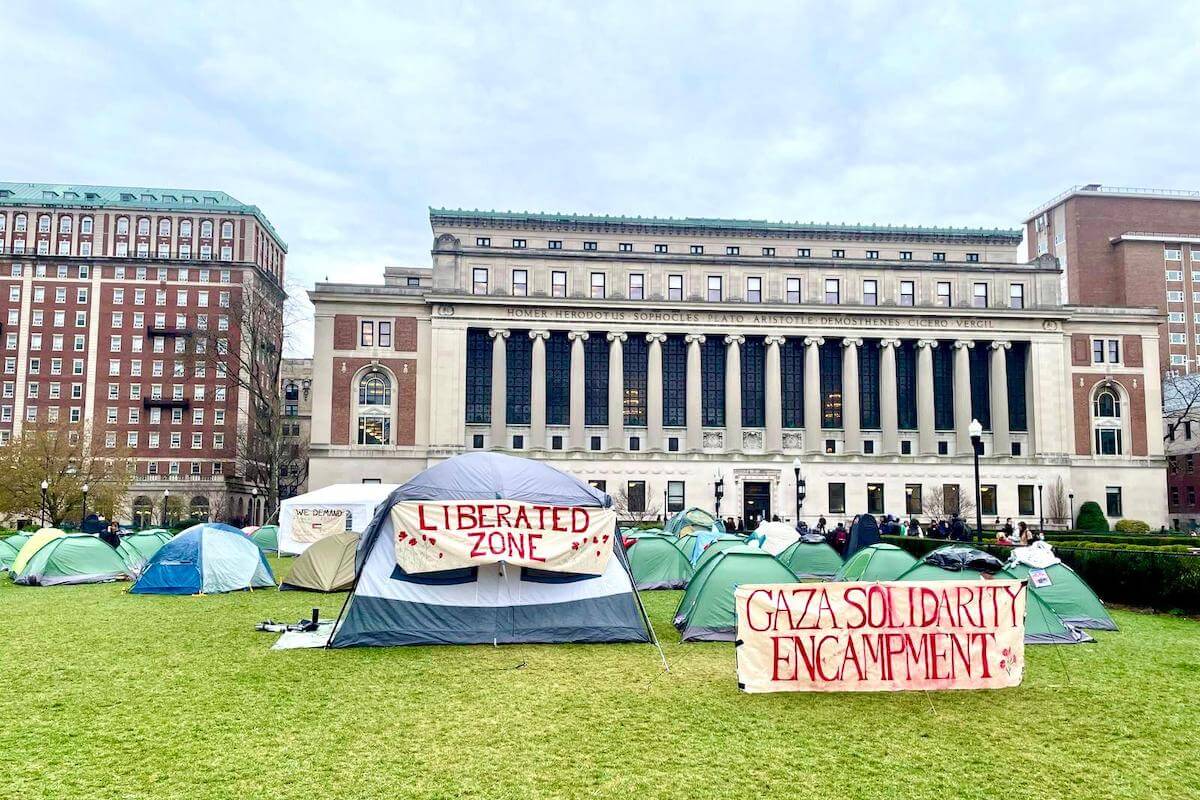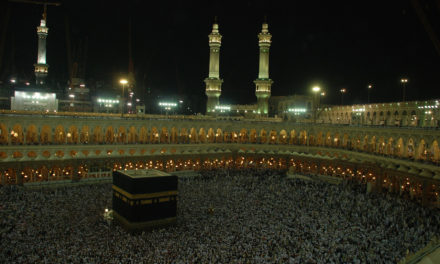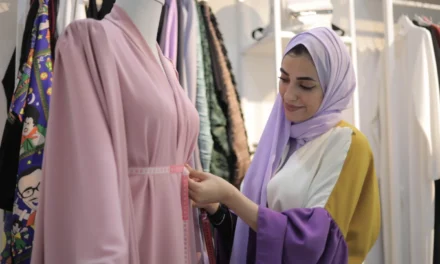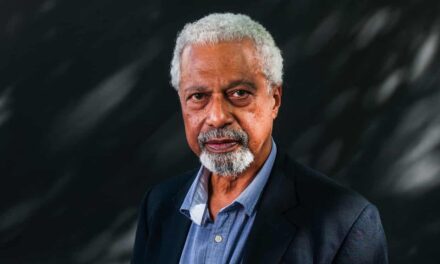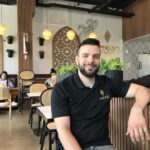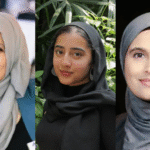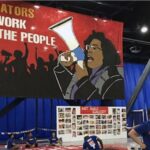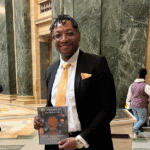COLUMBIA UNIVERSITY STUDENT ORGANIZERS SET UP THE GAZA SOLIDARITY ENCAMPMENT ON APRIL 17, 2024. (PHOTO: SOCIAL MEDIA)
Priscilla Yuen, Associate Director of Doctoral Affairs at Columbia Engineering, stands with papers flapping in hand, large sunglasses hiding her face as she repeats a warning to the students in front of her.
“You are in violation of university policy. If you do not remove from the premises by 11 am you will be suspended.”
Students continue to rhythmically clap.
Two Barnard College administrators attempt to encourage students to talk things out as Sarah Gillman, the VP of Strategic Finance Operations, stands slightly behind, silently observing.
Students respond by chanting.
Minouche Shafik, president of Columbia University, sends an email around 1 pm on April 18th alerting the university body that she has given the New York Police Department permission to arrest hundreds of students while paying homage to Columbia’s legacy of activism within the same correspondence.
Students respond by linking arms.
Columbia University student organizers set up the Gaza Solidarity Encampment on April 17. Sixty tents occupied the campus’s east lawn to push the university to divest from Israel’s ongoing genocide in Gaza. The encampment, inspired by ‘68’s occupation of Hamilton Hall and ‘85’s demonstrations at Mandela Hall, is not Columbia’s first attempt at divestment from the Zionist state. In 2020, a referendum calling on the university to divest from companies invested in Israeli apartheid passed by a large margin, but was ultimately rejected by then president, Lee Bollinger.
As Palestinians brave the occupation in Gaza, students everywhere continue to light the torch of Palestinian liberation on their college campuses. Institutionalized academia has long stood against the radical struggle of student activists, and the last 7 months have proven no different. Activism on college campuses has always been a stronghold for social justice and anti-war movements, but even more than that, it is a study of hope as a discipline. As despair eats at us and threatens hopelessness, students remind us that together, freedom is not only attainable, it is inevitable.
Student resistance has a long legacy across the world and a throughline throughout many global issues. From Tiananmen to Dhaka to Soweto to the United States, students have stood boldly against apartheid, gun violence, police brutality, climate change, global imperialism, and more. Academia has long heralded itself as a hearth of intellectual curiosity and innovation, encouraging students to challenge existing ideas and find new ways to better the world around them. After all, it was at Merritt College that Huey P. Newton and Bobby Seale founded the Black Panther Party, one of the most influential revolutionary vanguard organizations in existence.
Despite all of this, for as long as student activism has existed, so has repression by their administrative bodies. This has proven especially true over the last 7 months.
As I write this, thousands of people have descended upon Columbia’s campus to stand in solidarity with the hundreds of students who sat zip-tied in NYPD vans just the day before. On the opposite coast, students took to the streets after Asna Tabassum’s valedictory speech was canceled by the University of Southern California on unfounded safety concerns. In the south, the Council for American Islamic Relations (CAIR-Georgia) and Palestine Legal brandish a civil rights complaint against Emory University for fostering a “hostile Anti-Palestinian and Islamophobic Environment” after months of student harassment and suppression. Students at the University of North Carolina at Chapel Hill, Miami University in Ohio, and Yale University in Connecticut have even launched solidarity encampments of their own.
Palestine’s occupation has long been a powder keg in academic institutions. Students for Justice in Palestine, a grassroots national network of groups focused on the issue of Palestinian liberation, have faced countless obstacles as they push universities to divest from Israeli weaponry and tech as well as fight normalization of Israeli apartheid. Levels of harassment have only exponentially grown since October 7th, as students face renewed and vitriolic attacks from fellow students, faculty and even alumni. State and federal governments have even placed pressure on universities to continue to crack down on their alleged “pro-Hamas” students and student groups to address the wolf cries of antisemitism from Zionist bodies.
Perhaps one of the most sinister elements of university suppression is the adoption of social justice concepts and language to diversity, equity and inclusion their way into maintaining the status quo. So, when universities send representatives to tell students to abandon their protest, they send people who look like them. Institutions urge students to celebrate Shafik’s appointment as one of the first Arab woman Ivy League presidents, but not count on her to protect Arab students from police brutality. There is a reason that the U.S. sends Linda Thomas-Greenfield, a Black woman, to veto the countless resolutions for humanitarian ceasefire. It is also why Karine Jean-Pierre, the first openly queer press secretary, is who the U.S. chose to stare down journalists as she justifies this country’s active and willful participation in mass slaughter.
U.S. institutions, especially its academic ones, have answered the calls for justice by inviting marginalized people to a seat at an imperial table. This will not save us.
Student activists know this and reject neoliberal fantasies of identity politics. They are showing up for Palestine and the world in a way that the classroom will never teach them. Ever present in the face of looming suspensions, domineering university officials, and military-grade rifles is a deep care for their fellow man.
Mohammed El-Kurd writes that to speak truth to the rallying cry “We are all Palestinian” we must be prepared to truly embody the Palestinian condition of resistance and sacrifice. Student organizers across the world risk arrest, job security, housing in some instances, and academic prestige because they understand that none of these things is more valuable than a singular human life. And students who put everything on the line for freedom, have nothing left to fear.
We forget that these student movements are a microcosm of the best parts of larger society. For a while, some have even wrinkled noses at the idealized way in which students saw the world. But students are who we are when we are surrounded by community, by knowledge and by the grounding feeling of being a part of something much larger than any one person. Student movements remind us that liberation is in fact, collective.
So we keep our eyes fixed on Columbia and all of our college campuses, now more than ever, as the student resistance grows and pushes up against empire. We look to them for hope, because students remind us that we can dream of a just world. They are our reminders to stay the course.
University administrators fail to understand that student activists have glimpsed a remarkable future in which Palestinian liberation is possible. Students are building this future with every protest, every divestment referendum, every linked arm, every bellowing protest chant, and every keffiyeh waving proudly above their grassy quads.
Support the Columbia encampment by following Columbia Students for Justice in Palestine (@sjp.columbia) and Columbia University Apartheid Divest (@cuapartheiddivest).
